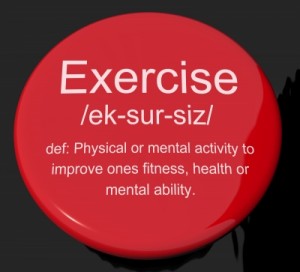 As modern brain scientists study human behavior, they find that we operate more unconsciously than previously assumed.
As modern brain scientists study human behavior, they find that we operate more unconsciously than previously assumed.
It’s not that we’re automatons without free will or that we lack rationality and refined decision-making skills. Our brains (specifically, the frontal cortex) simply drive us to act in ways that frequently bypass civilized thought processes—and much more often than we’d like to admit.
How else do you explain the increase in overweight, diseased, stressed-out and addicted people each decade, despite our vast knowledge of health, nutrition and fitness?
6 Daily Health Habits
World Health Organization statistics reveal there are now more overweight than undernourished people worldwide. Only one in 20 U.S. adults engages in all top six health behaviors according to David Berrigan in a 2003 article in Preventive Medicine, “Patterns of health behavior in US adults”:
- Regular exercise
- Healthful fat intake
- Consumption of 5 servings of fruit and vegetables daily
- Limited drinking (alcohol) and drug use
- Nonsmoking
- Maintaining a healthy weight
Some governments are now measuring the health and wellness of their citizens because they believe that such factors are as essential to life satisfaction as much as economics and education. Psychologist Martin Seligman’s research on optimism and happiness proposes five elements of well-being:
- Positive emotion: what we feel (pleasure, rapture, ecstasy, warmth, comfort)
- Engagement: thoughts and energy flow; immersion in a desired activity
- Relationships: essential social connections
- Meaning and purpose: our interpretations of what really matters
- Accomplishment: our desire for achievement and task completion
As a broad term, wellness describes overall health and well-being in terms of optimal functioning of the body, mind and spirit. Our daily choices—what we do, how we eat, the battles we fight, who we love—help determine our wellness level. Increasingly, people are working with wellness coaches to bridge the gap between knowing what’s healthy and doing what’s needed.
This article explores the factors that contribute to well-being and how working with a wellness coach can increase life satisfaction.
__________________________________________________________
This is a brief synopsis of a 850-word article and Article Nuggets,*suitable for consultants’ newsletters for executives and leaders in organizations. It is available for purchase with full reprint rights, which means you may put your name on it and use it in your newsletters, blogs or other marketing materials. You may also modify it and add your personal experiences and perspectives.
The complete article includes these important concepts:
- 6 Top Daily Health Habits
- Wellness Defined
- The Paradox of Choice
- Wellness Coaching 101
————————————————————————————
Request This Content:
Send us an email and let us know if you’d like to receive this article, Article Nuggets* or Newsletter (as applicable.) It is available in the following formats:
1. Choose to be Well 850-word Article with Full Reprint Rights, $57 –
2. Choose to be Well 3 Article Nuggets* with Full Reprint Rights, $64 –
*Article Nuggets: The same article broken up into 3-5 blog-style sections suitable for a series of blog posts or shorter newsletter articles.
(Image: freedigitalphotos.net by Stuart Miles)